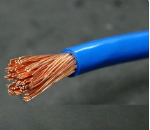Spring Washer Encyclopedia
Time:2024-04-16 16:44:18 Source:未知 Click:次

Abstract: Spring washers, also known as compression washers, are versatile industrial components commonly used in various mechanical equipment, electronic products, and more. This article will provide a detailed introduction to the application scenarios, installation methods, and precautions for spring washers, helping you better understand and utilize this type of part.
I. Application Scenarios of Spring Washers
Spring washers are elastic washers typically made from materials such as stainless steel, galvanized steel, copper, and more. Due to their unique elasticity, spring washers play a vital role in many situations, with the primary application scenarios including:
1. Mechanical Equipment: Spring washers are widely used in various mechanical equipment, such as bearings, bushings, screws, nuts, and other connecting parts, serving to prevent loosening, absorb shock, and provide sealing.
2. Electronic Products: In electronic devices, spring washers are used to fix components and wiring, prevent loosening, and enhance the reliability and stability of the equipment.
3. Automotive Components: Spring washers are also extensively used in automotive components, such as engines, transmissions, suspension systems, to absorb shock, provide sealing, and fix components.
4. Home Appliances: In furniture, household appliances, and other home items, spring washers are used to fix parts, reduce noise, and improve comfort.
II. Installation Methods of Spring Washers
The installation of spring washers is straightforward, but attention to detail is necessary to ensure their proper functioning. Here are the steps for installing spring washers:
1. Determine Position: Identify the position of the spring washer based on the design drawing or part layout.
2. Install Washer: Place the spring washer between the two components that need to be fixed.
3. Fasten Bolt: Connect the two components with bolts, ensuring the spring washer is in the correct position.
4. Tighten: Properly tighten the bolts to allow the spring washer to perform its functions of preventing loosening, absorbing shock, and providing sealing.
5. Check: After installation, check the position and tightening force of the spring washer to ensure they meet requirements.
III. Precautions for Spring Washers
When using spring washers, the following points should be noted to ensure their normal operation and extend their lifespan:
1. Material Selection: Choose the appropriate material, such as stainless steel, galvanized steel, copper, based on the application scenario and environment.
2. Size Matching: Ensure that the spring washer's size matches the components it is intended to fix, to avoid affecting the connection effect.
3. Installation Position: The spring washer should be installed in the correct position to fully utilize its functions.
4. Tightening Force Control: Moderately control the tightening force of the bolts; excessive or insufficient tension can affect the performance of the spring washer.
5. Corrosion Prevention: Take measures to prevent the spring washer from corroding during use, such as regular lubrication or use of rust preventatives.
6. Regular Inspection: Regularly inspect the position, tightening force, and overall condition of the spring washer, and address any issues promptly.
In conclusion, spring washers are widely used in many industries and fields, and understanding their application scenarios, installation methods, and precautions is crucial for ensuring the normal operation of equipment and work processes. It is hoped that this article's introduction will provide helpful guidance for your purchase and use of spring washers.






 Customer service 1
Customer service 1  Customer service 2
Customer service 2